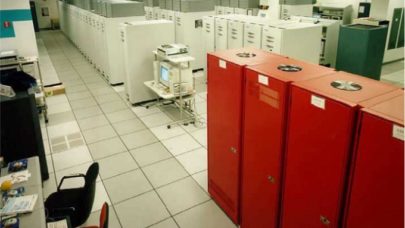
Reflecting on the 25th Anniversary of ASCI Red and Continuing Themes for Our Heterogenous Future
April 26, 2022
In the third of a series of guest posts on heterogeneous computing, James Reinders shares experiences surrounding the creation of ASCI Red and ties that system' Read more…

University of Liverpool Signs Up for Bull Supercomputer
January 8, 2013
40-teraflop machine will replace aging stable of clusters. Read more…

The New Breed of Accelerators from NVIDIA, Intel and AMD Square Off
December 6, 2012
With the recent introduction of Intel's first Xeon Phi coprocessors, NVIDIA's latest Kepler GPUs, and AMD's new FirePro S10000 graphics cards, the competition for HPC chip componentry has entered a new phase. The three chipmakers have taken somewhat different paths, though, and it will be up to the market to decide which vendor's approach will win the day. Read more…

Cray Launches Cascade, Embraces Intel-Based Supercomputing
November 8, 2012
AMD-loving Cray has launched the XC30 supercomputer, a product line that will be powered by Intel Xeon processors. The platform is based on the company's "Cascade" architecture, which is designed to bring a variety of processors and coprocessors under a common infrastructure. XC will become Cray's flagship computing platform as it phases out its XE and XK line over the next year or so. Read more…

Entry-Level HPC: Proven at a Petaflop, Affordably Priced!
May 30, 2012
Don't have a super budget? You can still own a premier high performance supercomputer with proven technology and reliability. New entry-level configurations and options enable you to configure the optimal balance of price, performance, power, and footprint for your unique and exacting requirements. Read more…

Top Indian Supercomputer Boots Up at Space Center
May 2, 2011
India announced a vast improvement over its former top supercomputer this morning with the introduction of the GPU-boosted SAGA-220, a 220-teraflop machine designed to tackle some of the country's most challenging space and aeronautical problems. Read more…

NVIDIA Reveals CUDA GPU Roadmap
September 22, 2010
GPU maker talks about life after Fermi. Read more…

Passwords No Match for GPGPUs
August 16, 2010
GPU technology threatens IT security model. Read more…

- Click Here for More Headlines

Whitepaper
Transforming Industrial and Automotive Manufacturing
In this era, expansion in digital infrastructure capacity is inevitable. Parallel to this, climate change consciousness is also rising, making sustainability a mandatory part of the organization’s functioning. As computing workloads such as AI and HPC continue to surge, so does the energy consumption, posing environmental woes. IT departments within organizations have a crucial role in combating this challenge. They can significantly drive sustainable practices by influencing newer technologies and process adoption that aid in mitigating the effects of climate change.
While buying more sustainable IT solutions is an option, partnering with IT solutions providers, such and Lenovo and Intel, who are committed to sustainability and aiding customers in executing sustainability strategies is likely to be more impactful.
Learn how Lenovo and Intel, through their partnership, are strongly positioned to address this need with their innovations driving energy efficiency and environmental stewardship.
Download Now
Sponsored by Lenovo
Whitepaper
How Direct Liquid Cooling Improves Data Center Energy Efficiency
Data centers are experiencing increasing power consumption, space constraints and cooling demands due to the unprecedented computing power required by today’s chips and servers. HVAC cooling systems consume approximately 40% of a data center’s electricity. These systems traditionally use air conditioning, air handling and fans to cool the data center facility and IT equipment, ultimately resulting in high energy consumption and high carbon emissions. Data centers are moving to direct liquid cooled (DLC) systems to improve cooling efficiency thus lowering their PUE, operating expenses (OPEX) and carbon footprint.
This paper describes how CoolIT Systems (CoolIT) meets the need for improved energy efficiency in data centers and includes case studies that show how CoolIT’s DLC solutions improve energy efficiency, increase rack density, lower OPEX, and enable sustainability programs. CoolIT is the global market and innovation leader in scalable DLC solutions for the world’s most demanding computing environments. CoolIT’s end-to-end solutions meet the rising demand in cooling and the rising demand for energy efficiency.
Download Now
Sponsored by CoolIT
Advanced Scale Career Development & Workforce Enhancement Center
Featured Advanced Scale Jobs:
HPCwire Resource Library
HPCwire Product Showcase
© 2024 HPCwire. All Rights Reserved. A Tabor Communications Publication
HPCwire is a registered trademark of Tabor Communications, Inc. Use of this site is governed by our Terms of Use and Privacy Policy.
Reproduction in whole or in part in any form or medium without express written permission of Tabor Communications, Inc. is prohibited.
























